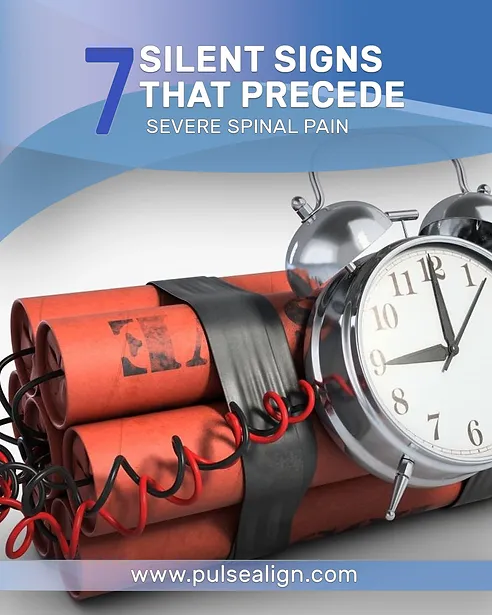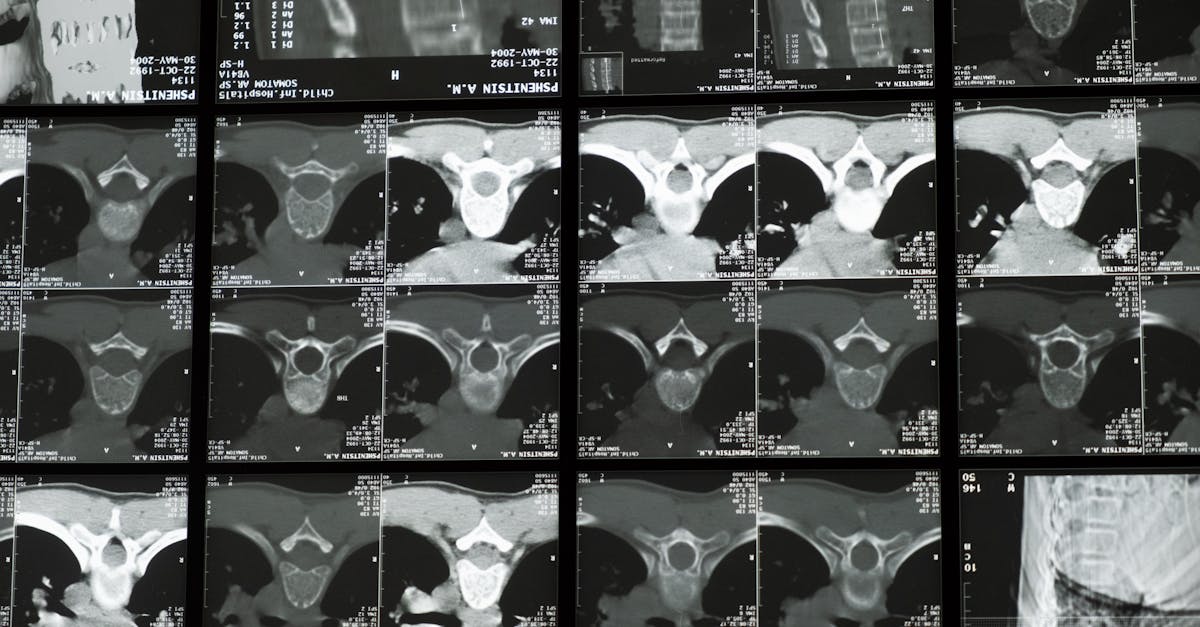Spinal pain
Spinal pain is a common issue that affects millions of people worldwide. Unfortunately, it is widely misunderstood by patients who limit their concerns to the severity of the pain. It is always preceded by these warning signs and just like your car, when it finally breaks down, it’s often a sign of longstanding neglect. Various factors, such as poor posture, muscle imbalances, and underlying health conditions can be to blame, but most often, there are silent warning signs before the onset of spinal pain. In this article, we will discuss seven subtle indicators that might suggest you are at risk of experiencing spinal pain in the future. By recognizing these signs early, you can take preventative measures to maintain a healthy spine.
Asymetrical Posture
Asymetrical posture is a significant contributor to spinal pain. Slouching to one side, hunching over, and craning your neck can put excessive strain on your spine, leading to discomfort and long-term damage. If you notice that your posture is less than ideal, it’s essential to address the issue before it leads to spinal pain (1).
Sedentary Lifestyle
A sedentary lifestyle can weaken the muscles that support your spine, increasing the likelihood of spinal pain. Incorporating regular physical activity into your daily routine can help strengthen these muscles and prevent spinal issues (2). However, treating the functional root of the issue cannot be replaced by regular exercices.
Frequent Muscle Tension
If you often experience muscle tension, particularly in the neck and back, it could be an early sign of spinal pain. Prolonged muscle tension can result in spinal misalignment and discomfort (3). People frequently explain the discomfort by looking back at recent activities, however, the tightness and tension is often always on the same side, and locations, a clear indication of a functional pattern.
Limited Flexibility
Reduced flexibility in your spine may indicate the presence of spinal issues. Limited range of motion can be caused by factors such as muscle tightness, joint stiffness, or even spinal disc problems. If you find it difficult to bend, twist, or perform daily activities without discomfort, it might be a sign that spinal pain is on the horizon. Incorporating preventative care with a Pulse Align practitioner can keep help your body normalize its tonal symmetry and enhance normal joint function. Adding Stretching exercises, yoga, or pilates into your routine can help improve your spinal flexibility and reduce the risk of pain and injury (4).
Unexplained Weakness
Unexplained muscle weakness, especially in the legs or arms, can be a sign of nerve compression or damage in the spine. This might manifest as difficulty lifting objects, climbing stairs, or maintaining balance. If left untreated, this can progress to spinal pain and other complications, such as loss of coordination or even paralysis. Seeking medical attention early on and addressing the underlying cause, whether it’s a herniated disc or spinal stenosis, can help prevent spinal pain and reduce the risk of long-term issues (5).
Numbness or Tingling
Numbness, tingling, or “pins and needles” sensations in your limbs might indicate nerve irritation or damage in the spine. These symptoms can result from a variety of spinal issues, such as a herniated disc, spinal stenosis, or degenerative disc disease. It’s crucial to address these symptoms early to prevent spinal pain and potential nerve damage, as untreated nerve compression can lead to chronic pain or even loss of function in the affected limb. Treatment options may include physical therapy, medication, or in more severe cases, surgery (6).
Changes in Gait
If you notice changes in your walking pattern, such as limping, dragging a foot, or an unsteady gait, it could be a sign of spinal issues. These changes might result from nerve compression, spinal misalignment, or degenerative conditions affecting the spine. Altered gait can lead to additional strain on the muscles and joints of the lower extremities, potentially causing pain and dysfunction beyond the spine itself. Addressing the underlying spinal issue through conservative treatments, such as physical therapy or chiropractic care, can help correct gait abnormalities and reduce the risk of spinal pain and other complications (7).
Conclusion
By recognizing these silent signs, you can take action to prevent spinal pain and maintain a healthy spine. It is important to clarify that even before the spinal condition deteriorates, there is more often than not, signs of postural asymmetry that you can see in the mirror. Consult a healthcare professional if you experience any of these symptoms to address the issue early and reduce the risk of complications.
References:
- Harvard Health Publishing – Why Good Posture Matters
- Mayo Clinic – Office Exercise: Add More Activity to Your Workday
- Spine-health – How Muscle Tension Causes Neck Pain
- Cleveland Clinic – Spinal Flexibility
- WebMD – Nerve Compression Syndrome
- National Institute of Neurological Disorders and Stroke – Spinal Stenosis
- [SpineUniverse – Gait Changes and Spinal
As the visionary CEO of Pulse Align, François is dedicated to transforming the landscape of pain management and posture health. With a deep-rooted passion for innovation and a commitment to excellence, François leads the team in developing cutting-edge solutions that empower individuals to live healthier, pain-free lives. Under his leadership, Pulse Align has become a beacon of hope and support for those navigating postural-related issues and chronic pain. François brings a wealth of experience in neuromodulation and patient management technologies, combining strategic insight with a compassionate approach to address the unique challenges faced by each individual.




